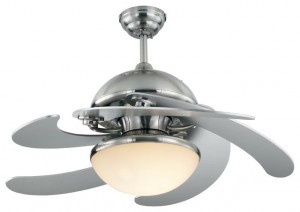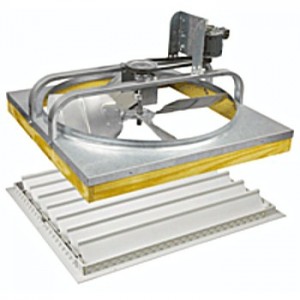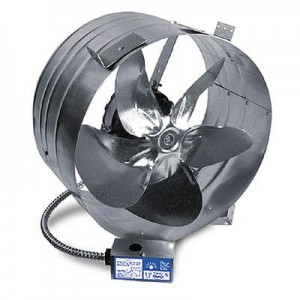Whether it’s a fan in your bathroom, bedroom, living room, kitchen or hallway, having air circulation is always a good idea. Not only do fans conserve energy but they also keep you cool!
Bathroom exhaust fans are great for many reasons, most importantly for removing the moisture out of the room after a shower. If your exhaust fan has stopped working we can either simply replace the motor, which doesn’t take much time, or we can replace the entire unit with a replacement unit. New exhaust fans are often quieter than the old fans were and there are several different styles to choose from with and without lights. You can also purchase a new exhaust fan with a higher CFM rating which gives you more air movement. It is a bit more of a project to install a whole new fan as compared to just changing out a motor on an existing fan, so keep this in mind when making your decision.
Ceiling fans in bedrooms, living rooms and kitchens are great not only on warm days an nights but also to just recirculate the air. In bedrooms, we recommend not only having a control located on the wall, but also having a remote control wired inconjuction for the convenience of adjusting the fan speed during the middle of the night. Remote controls aren’t typically needed in kitchens and living rooms, just a wall control will typically do. Remote controls can be added to any normal ceiling fan that did not originally come with one, so don’t worry about purchasing a fan that comes with a remote. Another great reason to add a ceiling fan to a room is that most of the ceiling fans come with light kits. If the room you are adding the fan to doesn’t have an overhead light, your new fan will now not only keep you cool, recirculate the air but also shed some light on things.
Whole house fans are great for cooling your home at the end of the day as outside temperatures begin to drop at dusk. They are a bit noisy but are much more efficient and cost friendly than using your air conditioner. These fans are typically installed in hallways with a switch to turn them on or off. Once outside temperatures have dropped, you open up a majority of the windows and doors throughout the house, turn your whole house fan on, and it begins taking in fresh cooler air from outside. It will exhaust the old hot air from inside the house up into the attic. Which brings us to our next type of fan, the attic fan.
Attic fans have automatic temperature switches built on them that can be set to any temperature you like. Typically we set them anywhere from, 100 to 110 degrees Fahrenheit. Whenever the temperature in your attic reaches the temperature set point on your attic fan, it turns on. It draws the air from the attic and exhausts it out of the vent that the fan has been mounted to, thus lowering the temperature in the attic. On hot days these fans will cycle on and off several times throughout the day, keeping your attic, and more importantly your house, a lot cooler.




